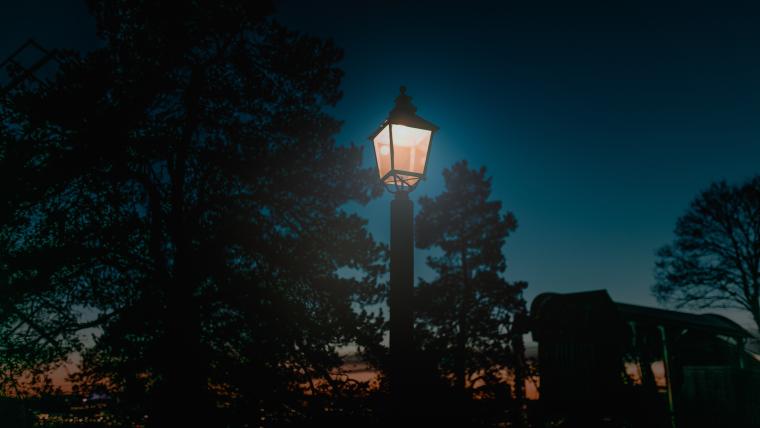
In a nutshell
Many sources of artificial light illuminate the night, from headlights on country roads to office buildings and streetlights in urban settings. We know plants respond when the days get longer in the spring and shorter in the fall, but what happens when it’s still light after sunset? Using data on dozens of species and hundreds of sites in the Nature’s Notebook dataset, Lin Meng and colleagues found that the presence of artificial light advances breaking leaf buds and delays leaf color change. The effect is noticeable – the authors found that trees broke their buds 9 days earlier with artificial light, compared to sites under similar temperature conditions without artificial light. Leaves turned color 6 days later in sites with artificial light. The authors also looked at how increasing artificial light and temperature will continue to affect phenology into the future. They found that breaking leaf buds will continue to advance, while colored leaves may advance or delay depending on future temperature conditions.
What is special about this study?
While many studies have examined role of temperature and rainfall in the timing of leaf out, few studies have looked at the impact of artificial light at night. NASA’s Black Marble dataset, which shows our planet alight at night (based on satellite imagery), was combined with Nature’s Notebook data for the first time, to provide new insights on the role of artificial light. This study helps the public recognize light pollution as an important urgent issue in urban ecosystems, and provides guidance on how we should design and regulate artificial light to protect the environment.
We’re also really excited that the study’s lead author, Lin Meng, won the 2021 Science & SciLifeLab Prize for Young Scientists for her work on phenology (read her prize essay in Science).
What does this mean for YOU?
Climate change isn’t the only factor influencing plant phenology. To understand how climate change is shifting the timing for plants in your area, it helps to know what else might be having an impact.
The findings from this study also provide a great opportunity to reflect on your local area: What does your neighborhood look like at night? How do you think your plants (and animals!) might be responding? If you’d like to explore more about the presence and impact of artificial light at night, you could explore a participatory project like Dark Sky Meter.
Citation: Meng, L., Zhou, Y., Román, M.O., Stokes, E.C., Wang, A., Asrar, G.R., Mao, J., Richardson, A.D., Gu, L., Wang, Y. 2022. Artificial light at night: an underappreciated effect on phenology of deciduous woody plants. PNAS Nexus. doi.org/10.1093/pnasnexus/pgac046